Lens Geometry Performance Comparison
Authors: Ian Schwartz,Amy Frantz
The ideal: each point on an object being imaged maps perfectly to a point on the image. The reality: aberrations blur perfect image points to larger spots. Though manufacturing tolerances also contribute to performance degradation, these aberrations occur even for a perfectly manufactured lens.
Spherical aberrations occur when rays at the aperture’s edge focus at a different axial position compared to rays at the aperture’s center (Figure 1a). These aberrations increase with pupil size, so smaller f/# lenses are affected more than larger f/# lenses. Aspheric lenses can be designed with a different curvature at the lens edge instead of the center to correct for spherical aberrations.
Due to the glass property of dispersion, different wavelengths of light experience unique indices of refraction thus are bent by different amounts. Chromatic focal shift (CFS) describes the change in the axial position of focal wavelength. The resulting chromatic aberrations lead to larger spot sizes (Figure 1b). Achromatic lenses use multiple materials with opposed dispersions to improve performance with multichromatic light.
Since these aberrations can drastically affect spot size and image quality, deciding which lens is the best for a given task is not always straightforward. Does it always make sense to use the highest-precision asphere? Is a spherical plano-convex (PCX) lens ever sufficient? Zemax OpticStudio was used to answer these questions.
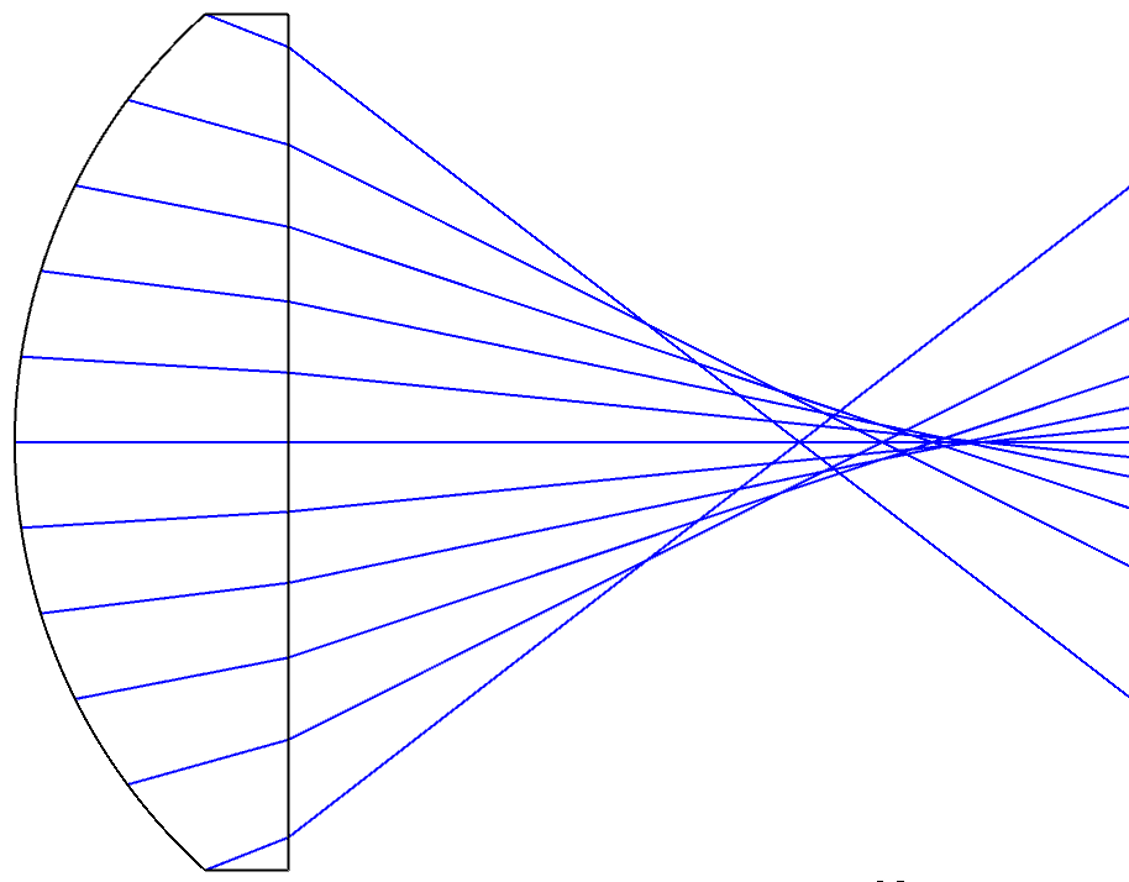
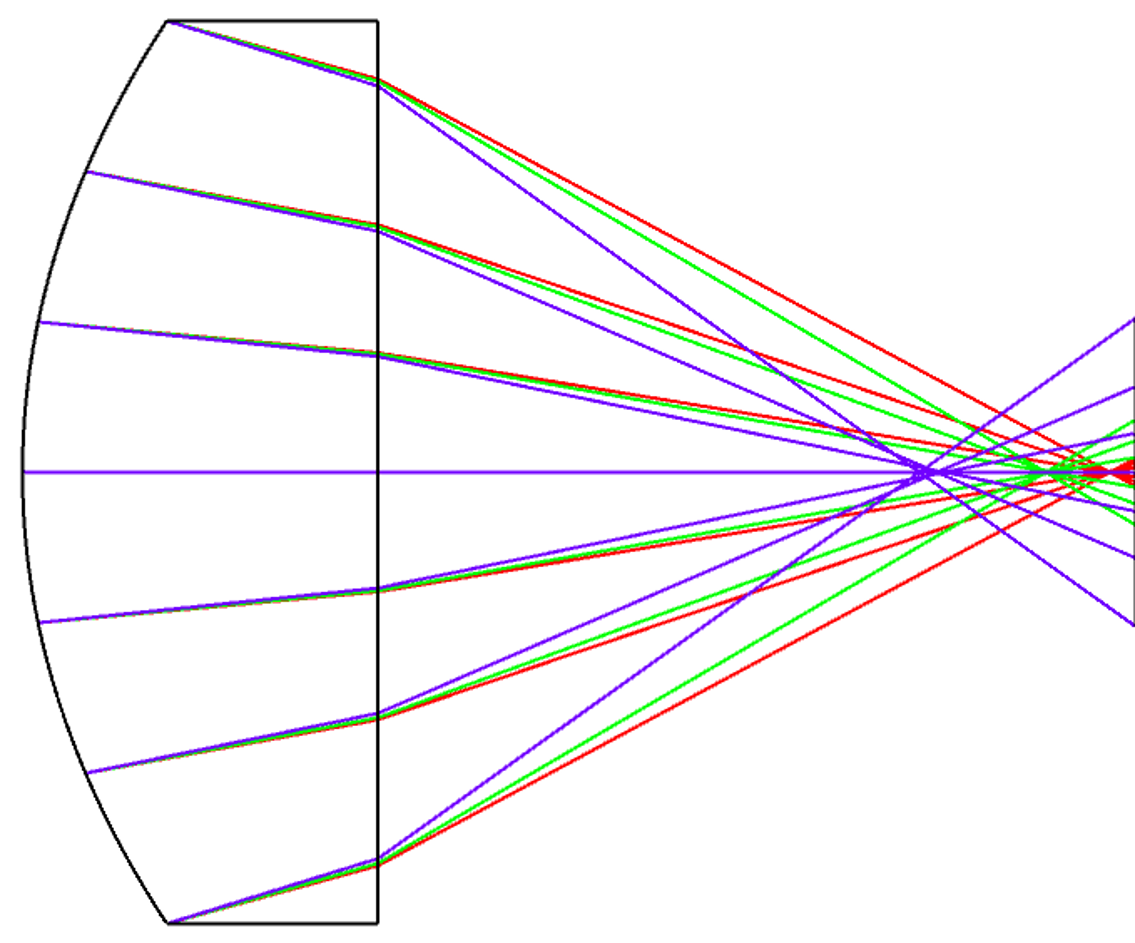
Figure 1(a): Spherical aberrations affect the focal point of a lens depending on the radial distance from the lens center.
Figure 1(b): Chromatic aberrations shift the focal point depending on the wavelength of light.
Simulation One: Single Wavelength Focusing
Consider a single wavelength beam that needs to be focused to the smallest spot size possible. Aspheres are designed for this purpose, so it is unsurprising that they outperformed each of the other lenses in the simulation (Figure 2). In practice, however, one must consider factors such as diffraction limit, a physical limit to the resolution of light which is discussed in detail in our Airy Disk and Diffraction Limit application note. The smallest spot size for aspheres will be limited by the diffraction limit, which is smaller for lower f/# lenses. Aspheres have better real-world performance at lower f/#'s due to the diffraction limit.
While PCX and achromatic lenses have worse performance at lower f/#'s, at a large enough f/#, singlets and achromats can also achieve diffraction limited performance, indicating they would perform just as well as an asphere. In fact, for f/# > 7, spherical lenses can theoretically meet the diffraction limit, meaning the benefits of using an asphere may not justify the additional cost (Figure 3). Achromats usually have better performance than PCX lenses because the additional spherical surfaces lead to more degrees of freedom to optimize performance.
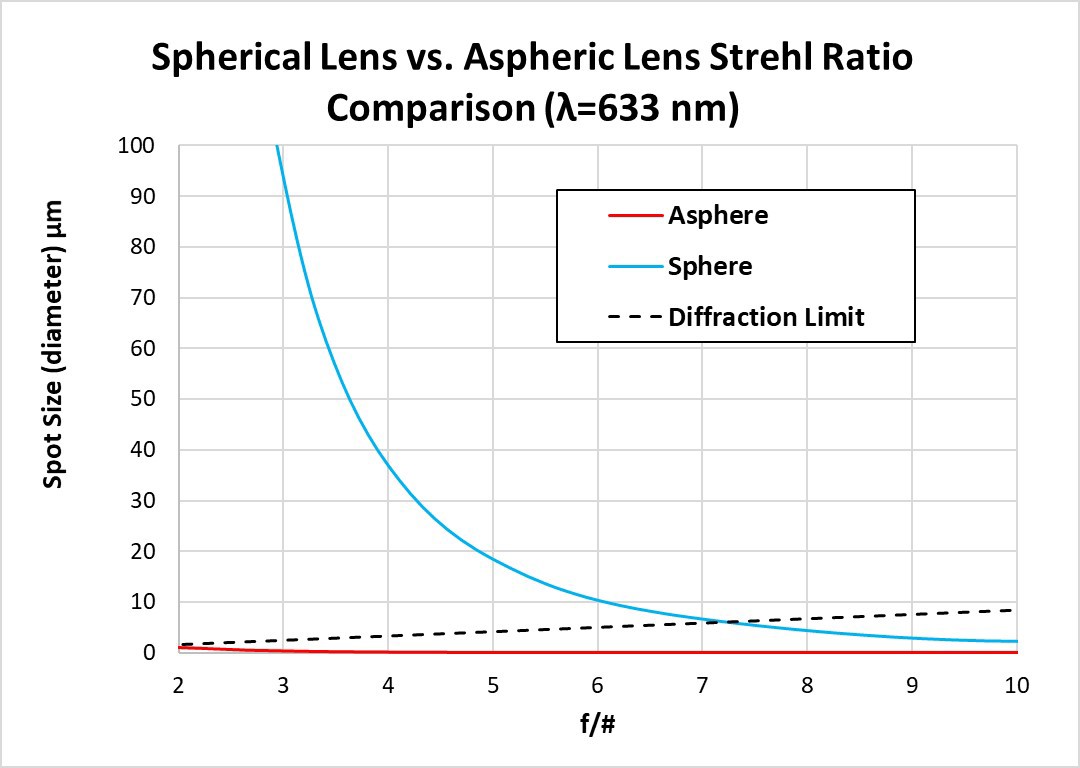
Figure 3: Theoretical limits on spot size for spherical and aspherical lenses as compared to the diffraction limit.
Simulation Two: Multiple Wavelength Focusing
Which lens would have the best performance for a beam consisting of multiple wavelengths? Achromats are designed to reduce chromatic focal shift, but they are not always the best choice (Figure 4). For small f/#'s, the spherical aberration in lenses dominates other factors that determine performance, but for larger f/#'s chromatic aberration is more significant (in either case, the spot size is not diffraction limited). Because of this, aspheres still demonstrate the best performance for small f/# applications, even when using multiple wavelengths. Consider the wavelength range and f/# when choosing an asphere or achromat for the best, multiple wavelength performance. Single material lens elements exhibit chromatic focal shift dependent on thickness and the dispersion properties of the material, but they should not be ruled out until f/# is considered.
While none of the selected lenses meet the diffraction limit, it is certainly possible to achieve such performance for multiple wavelengths. For applications where diffraction-limited performance is required, see Edmund Optics’ best form aspheric lenses, aspherized achromatic lenses, or contact us for custom options!
Simulation Three: Relay with 5mm Half Field
Finally, consider a relay consisting of two identical lenses. In this case, the same general principles for single element system apply and performance with field will decrease compared to only on-axis systems (Figure 5). Larger f/#'s play a significant role in decreasing the spot size of both single and multiple wavelength light, causing an f/4 PCX lens relay to outperform an f/2 asphere system. For low f/#'s, multiple spherical surfaces minimize spherical and other monochromatic aberrations while multiple materials minimize chromatic aberrations.
Lens Comparison
Given the tests shown above, there are several important considerations to keep in mind when selecting a lens. To help find the best lens for a given application for both performance and cost, please contact us to receive complimentary engineering support.
| Plano-Convex | Achromat | Asphere | |
|---|---|---|---|
| Description | Single material with one convex spherical surface and one planar surface | Two cemented materials, generally convex on both outer surfaces, and a cemented inner spherical surface | Single material, typically one side is a convex asphere and other side is planar |
| Advantages | Many available off-the-shelf, simple designs for focusing light | Better performance for using multiple wavelengths | High performance even at high numerical apertures |
| Disadvantages | Lower performance | Adhesive layer not ideal for high power lasers | Specialized design typically optimized for single wavelength, longer lead time for custom designs |
| Cost | Low | Medium | High |
| Comments | Flexible, useful for many applications | Improved chromatic aberrations | Improved monochromatic aberrations (particularly spherical) |
Test Case Lenses

|

|

|

|

|

|

|

|

|
The Right Lens from Edmund Optics®
Edmund Optics® offers a wide range of PCX, achromatic, and aspheric lenses in many different sizes, focal lengths, materials, and coatings in-stock and available for immediate shipping. Additionally, Edmund Optics manufacturing engineers are available to make custom lenses tailored for any application.
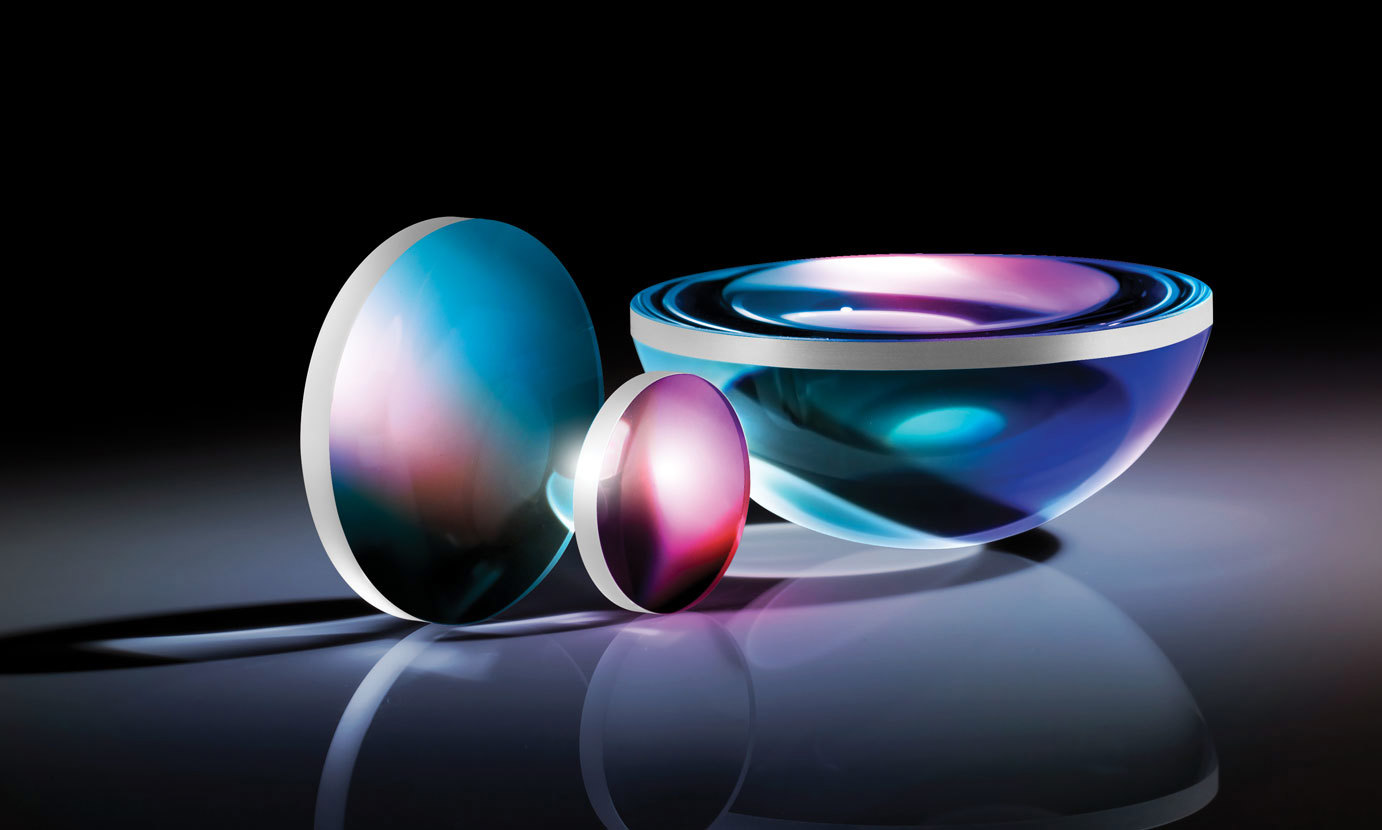
 Plano-Convex (PCX) Lenses
Plano-Convex (PCX) Lenses
- Precision Diameter and Centration Tolerances Allow for Easy OEM Integration
- Wide Variety of Diameters, Focal Lengths, and Coatings
- Anti-Reflection Coating Options: MgF2, VIS 0°, VIS-NIR, NIR I, NIR II, VIS-EXT, and YAG-BBAR
BUY NOW

 Achromatic Lenses
Achromatic Lenses
- Designed to Minimize Chromatic and Spherical Aberrations
- Wide Range of Coatings Including MgF2, VIS 0°, VIS-NIR, NUV, and More
- Mounted Versions and Kits Available
BUY NOW
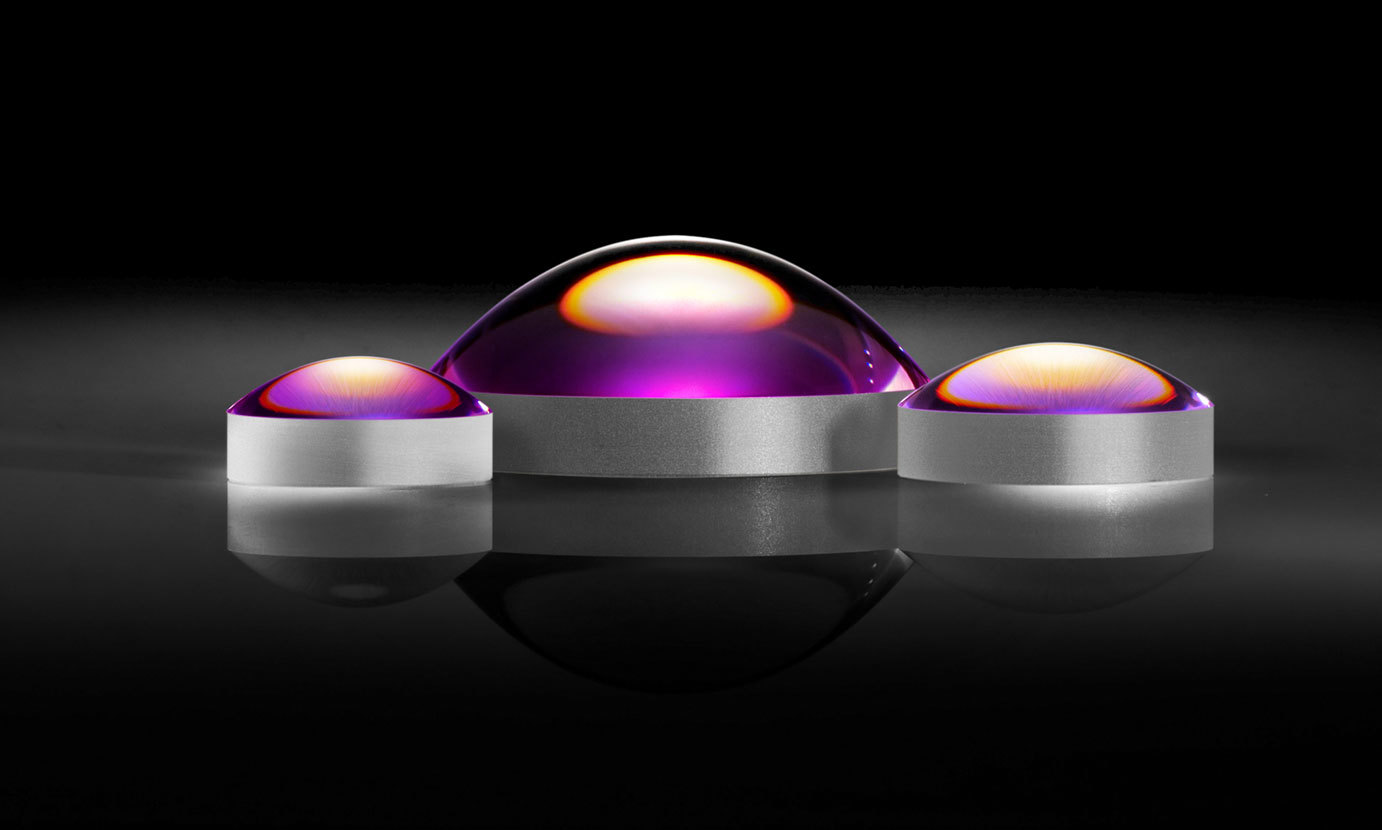
 Aspheric Lenses
Aspheric Lenses
- Maximum Correction of Spherical Aberration
- Precision Polished, Infrared, and Molded Versions Available
- Down to 0.25µm RMS Aspheric Figure Error
BUY NOW
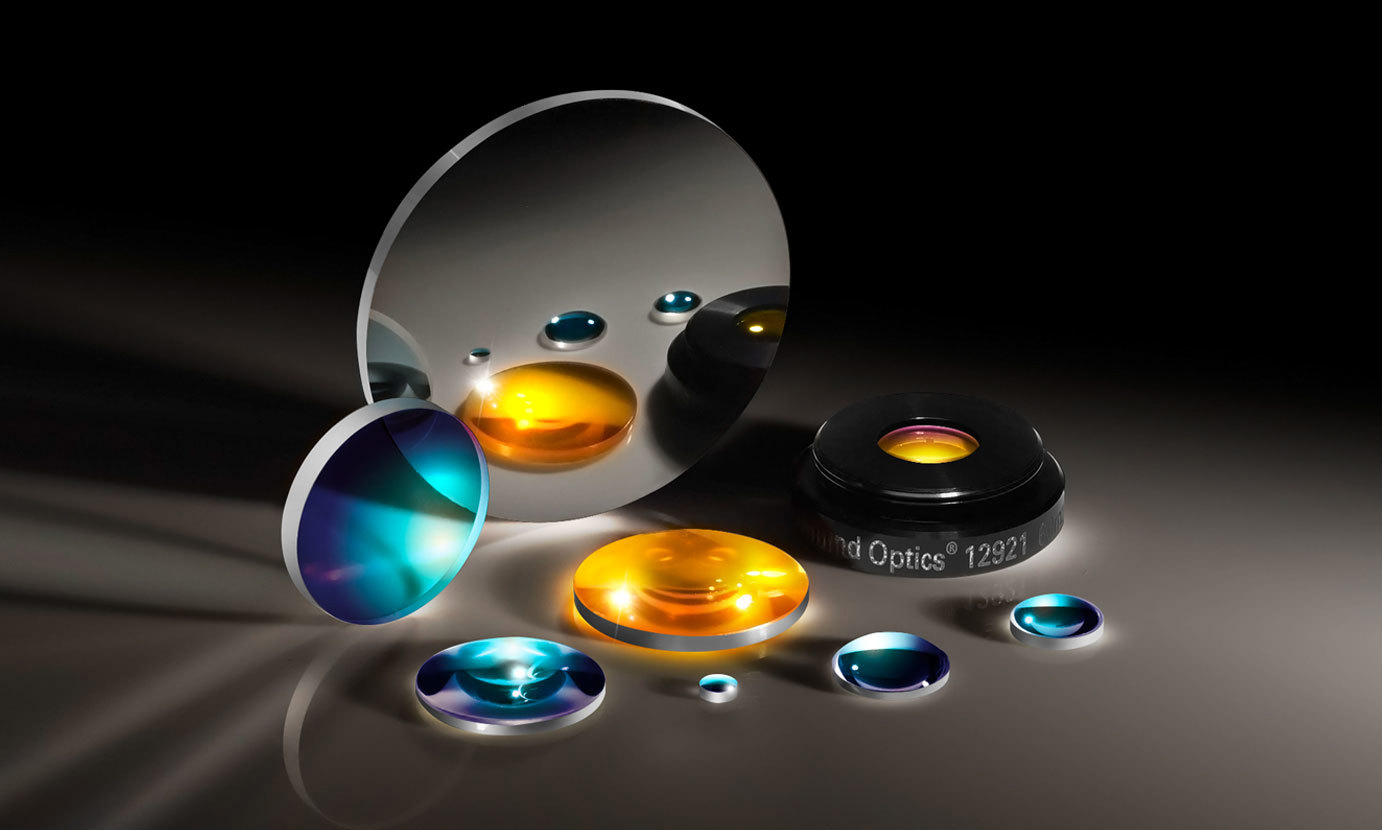
All Lenses
- Vast Selection of Off-the-Shelf Lenses
- Additional Options Including Cylinder, Laser Line, and Specialty Lenses
BUY NOW
More Resources
- Understanding Optical Lens Geometries
- How an Aspheric Lens is Made Video
- All About Aspheric Lenses
- High-End Asphere Design for Manufacturability
- Aspherized Achromatic Lenses
- Next Generation of Spherical Lenses
- Cost Impact of Spherical Tolerancing Webinar
- Comparison of Optical Aberrations
- Chromatic and Monochromatic Optical Aberrations
- Edmund Optics Global Manufacturing Facilities





























or view regional numbers
QUOTE TOOL
enter stock numbers to begin
Copyright 2023, Edmund Optics Inc., 101 East Gloucester Pike, Barrington, NJ 08007-1380 USA
California Consumer Privacy Acts (CCPA): Do Not Sell or Share My Personal Information
California Transparency in Supply Chains Act